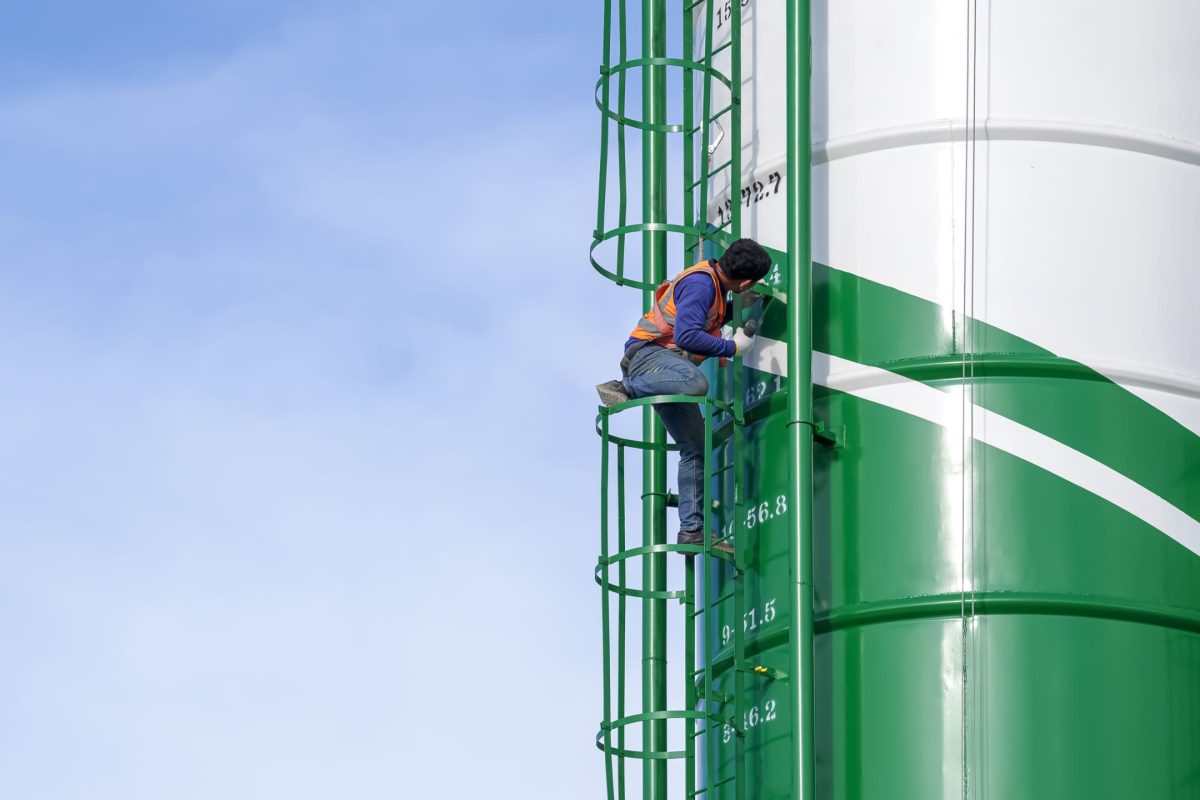From Prep to Cure: A Guide to Long-Lasting Tank Coatings

Posted on September 24, 2025 by Brent Phillips
A comprehensive approach is crucial for water asset managers and city authorities aiming to achieve long-lasting tank coatings. In today’s blog, we’ll outline guidelines for critical steps for both water tower and tank coatings that ensure long-lasting protection for delivering safe and clean community water supplies. By focusing on surface preparation, system choice, application, curing, and lifecycle planning, organizations can maximize both safety and investment.
Importance of Proper Surface Preparation
Proper surface preparation is the foundation for any tank coating project that aspires to durability. Without it, the most advanced coatings can fail prematurely, jeopardizing water quality and requiring costly repairs and expensive maintenance. Sound surface preparation steps include:
- Removal of all contaminants, such as rust, scale, and old coatings
- Thorough cleaning using industry-accepted methods like abrasive blasting
- Verification of surface profile for optimal coating adhesion
Failure to adhere to proper surface prep could lead to poor adhesion. Significantly reduce the expected lifespan of any long-lasting tank coatings, potentially compromising water quality and necessitating costly repairs.
Choosing the Right Coating System
When selecting an appropriate coating system, it’s important to follow industry standards put out by ANSI/NSF 61 on potable water. Water tower and tank coatings must comply with these regulatory standards. The difference depends upon the type of substrate–concrete or steel–being coated. Key factors to consider include:
- Environmental conditions (humidity, temperature, chemical exposure)
- Compatibility with stored water and tank materials
- Anticipated maintenance intervals
Popular protective coating options that supply long-lasting tank coatings include epoxy, polyurethane, and specialty sealants. Each coating form offers unique protection levels and application requirements.
Application Best Practices
The actual coating application is a precision process requiring skill and attention to detail. For optimal results with long-lasting tank coatings, experts recommend:
- Applying coatings to manufacturer-specified thickness and cure rates
- Using correct equipment—such as airless sprayers or rollers—for even coverage
- Closely monitoring temperature, humidity, and dew point during application
Adherence to these best practices during application is not just a recommendation; it’s a responsibility for the municipality and the coating experts. It ensures the coating forms an uninterrupted, protective barrier that is critical for long-lasting protection.
Curing and Inspection Processes
Once the coating is applied, following correct curing and inspection procedures is mandatory. Regular inspection during and after curing helps verify that coating performance meets specifications:
- Allow each coating layer to cure for the recommended time between coats
- Perform dry film thickness testing with calibrated gauges
- Inspect for surface defects, ensuring no holidays or missed spots
Immediate repairs of any defects identified during inspection prevent premature coating breakdown and extend system life.
Long-Term Maintenance and Lifecycle Planning
Even with excellent initial prep and application, ongoing maintenance and planning are essential for maximizing the return on lasting tank coatings. Asset managers should establish clear, proactive maintenance protocols, including:
- Routine scheduled inspections to identify early signs of wear or corrosion
- Timely touch-ups or recoating as needed
- Comprehensive documentation of inspections, repairs, and product data for regulatory compliance
By following these key steps and best practices, water asset managers and city authorities can ensure that tank coatings provide reliable and durable protection for vital water infrastructure. A good lifecycle planning for a water tank or tower is to:
- Set annual or biennial inspection intervals
- Log coating condition and repairs after every maintenance visit
- Schedule full recoating only when necessary, based on documented condition assessments
If your municipality’s water tank or tower requires inspection, maintenance, and a new protective coating, or if you have questions about recoating your city’s water tank and tower, contact the experts at Cunningham today.